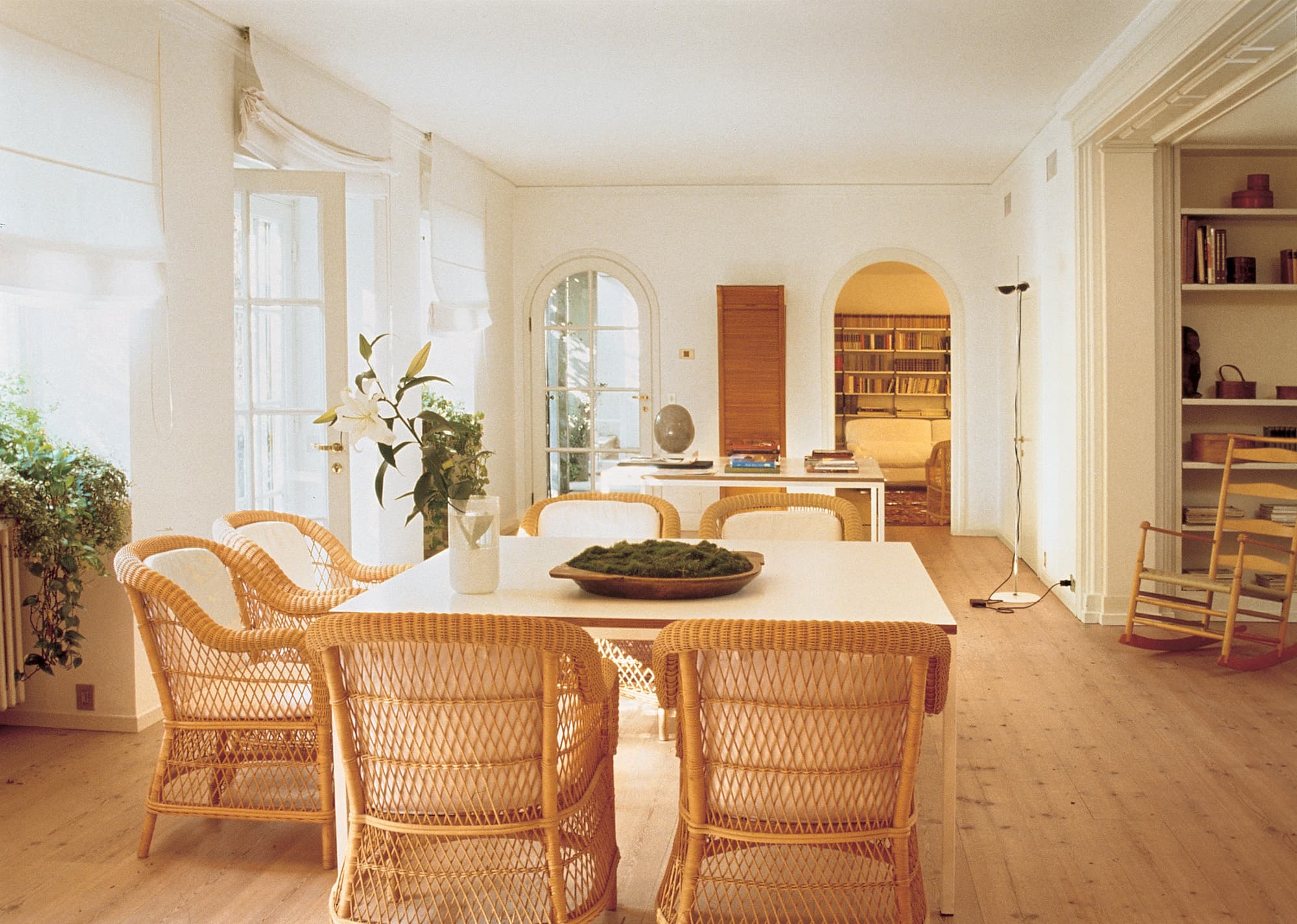When Maddalena de Padova opened her first showroom in Milan in the 1950s, much of Italy’s design industry was still stuck in the past. An eye-opening trip abroad—and the work it inspired—helped change the trajectory of Italian style.

Nowadays, the words “Italian design” might conjure up a certain sleek, sophisticated sensibility, but back in the mid-1950s, much of the country was still awash in dark, faux-antiqued carved wood. While contemporary talents like Gio Ponti and Osvaldo Borsani were doing their best to modernize the aesthetic with Art Deco sleekness and an early industrial edge, it was slow going. Like the French, who revered Louis-era decor, and the British, who clung to colonial-era Empire, Italians at the time tended to lean back on the tropes of the Renaissance.
Then came Maddalena de Padova. She and her husband, Fernando, at first had a Milan showroom with typical bourgeois offerings, but that all changed—virtually overnight—after a trip to Northern Europe and the U.S. in the late 1950s. In Scandinavia, they saw the work of such pioneers as Alvar Aalto in light woods with streamlined silhouettes; in the U.S., they fell in love with the radical creations of Charles and Ray Eames, including fiberglass shell chairs and a molded plywood lounge. At the time, the Eameses designed only for Herman Miller, but within months, the de Padovas signed an exclusive deal with the Michigan-based, family-owned company to manufacture and distribute those same pieces in Italy, selling them from their showroom on Via Montenapoleone. Soon after came designs by Aalto, Arne Jacobsen, Borge Mogensen, and Hans Wegner.
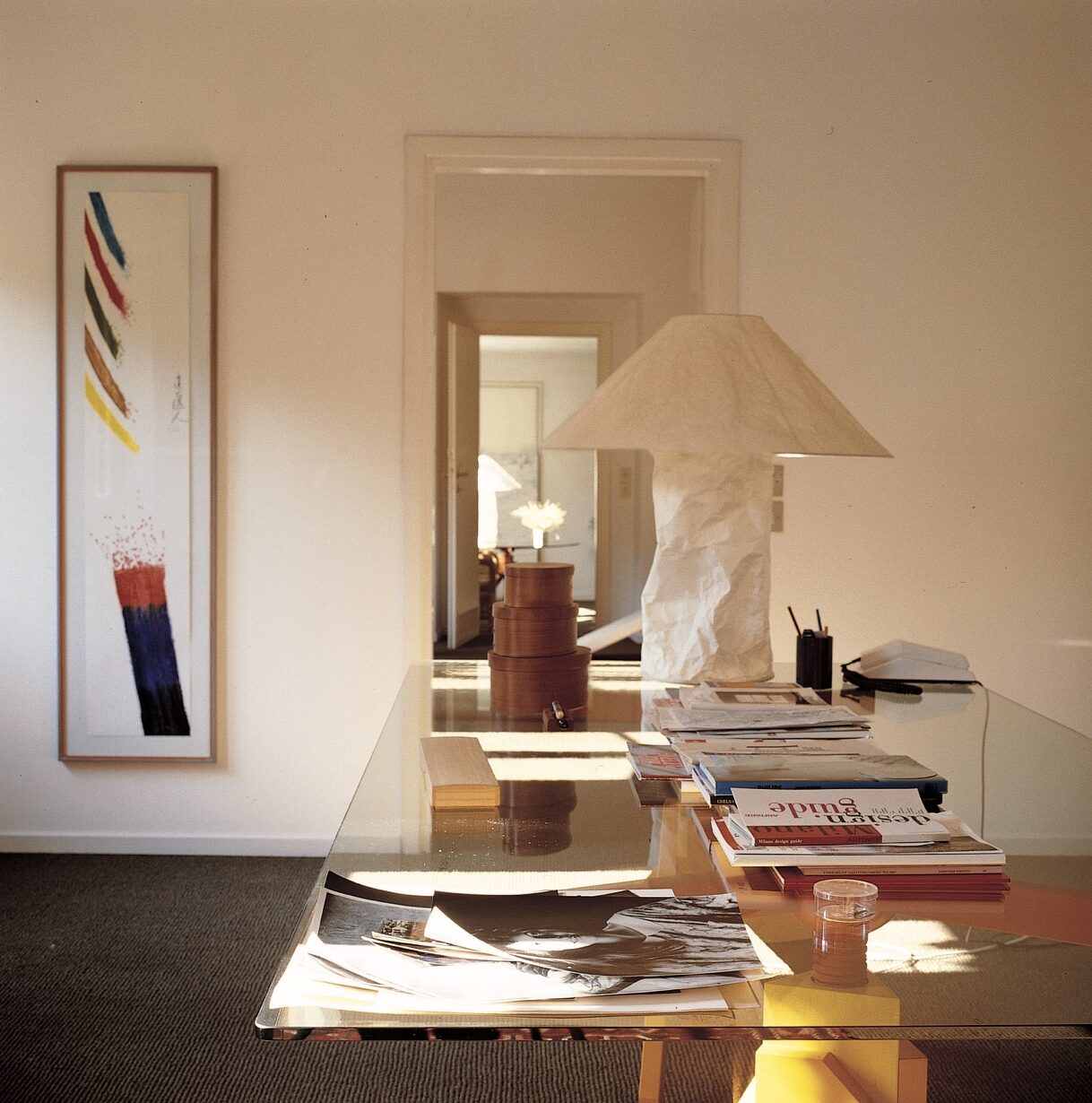
De Padova’s second floor office features a Vico Magistretti glass-topped Vidun table in stained beechwood and a lamp by Ingo Maurer made of crinkled paper. Pieces by the Milanese Magistretti constitute a significant part of her collection.
Antoine Bootz-
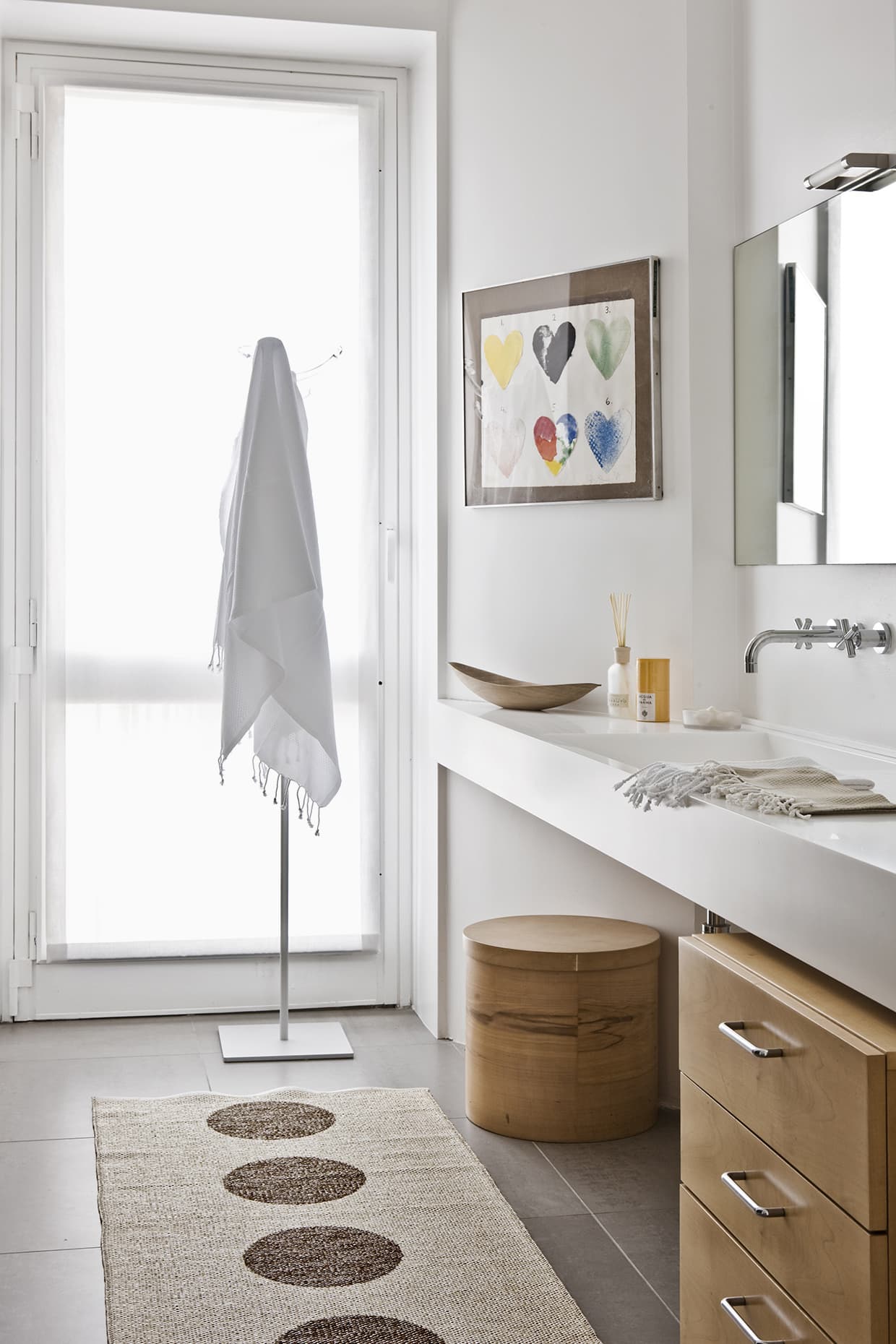
The primary bedroom and adjoining bathroom showcase her utilitarian modern aesthetic.
STEFANIA GIORGI -
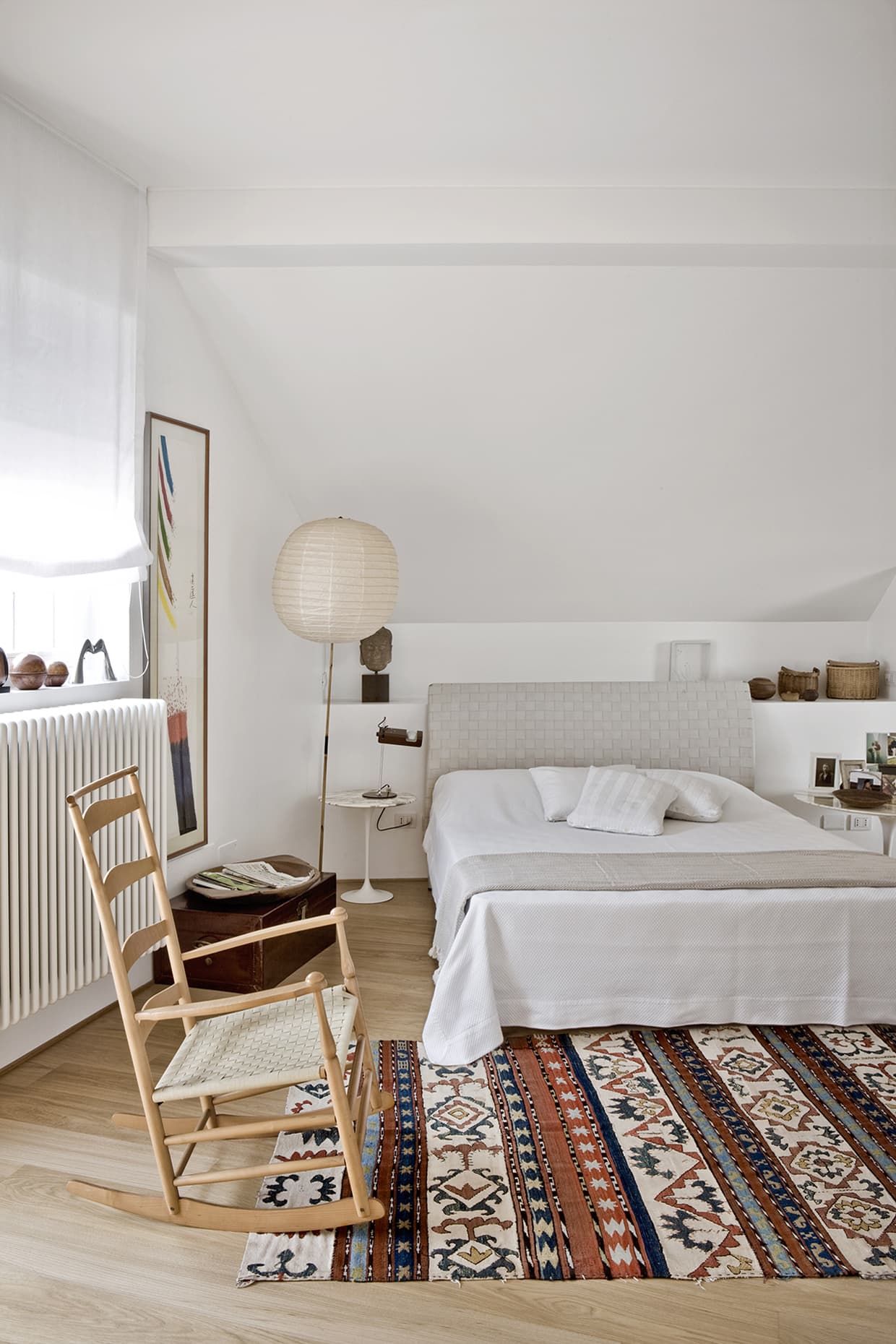
“In the realm of decoration I am only interested in what is strictly necessary, what is absolutely essential,” de Padova told House Beautiful in the early 1990s, when the magazine featured her home in Milan.
STEFANIA GIORGI
As Italy entered its economic boom times, de Padova, which opened a larger space on Corso Venezia, became the place that architects and designers visited to see where taste was headed. Maddelena, statuesque, graceful and well-coiffed, oversaw the business with an elegant yet intimate effortlessness. “She remade the way Italians looked at design,” says Louis Oliver Gropp, who was the editor-in-chief of House Beautiful during the 1990s (he featured her sun-streaked 1930s cottage, surrounded by a verdant garden in the center of Milan, in the magazine’s pages), “but she was more than just a retailer. She was a tastemaker who brought it all together in one place.”
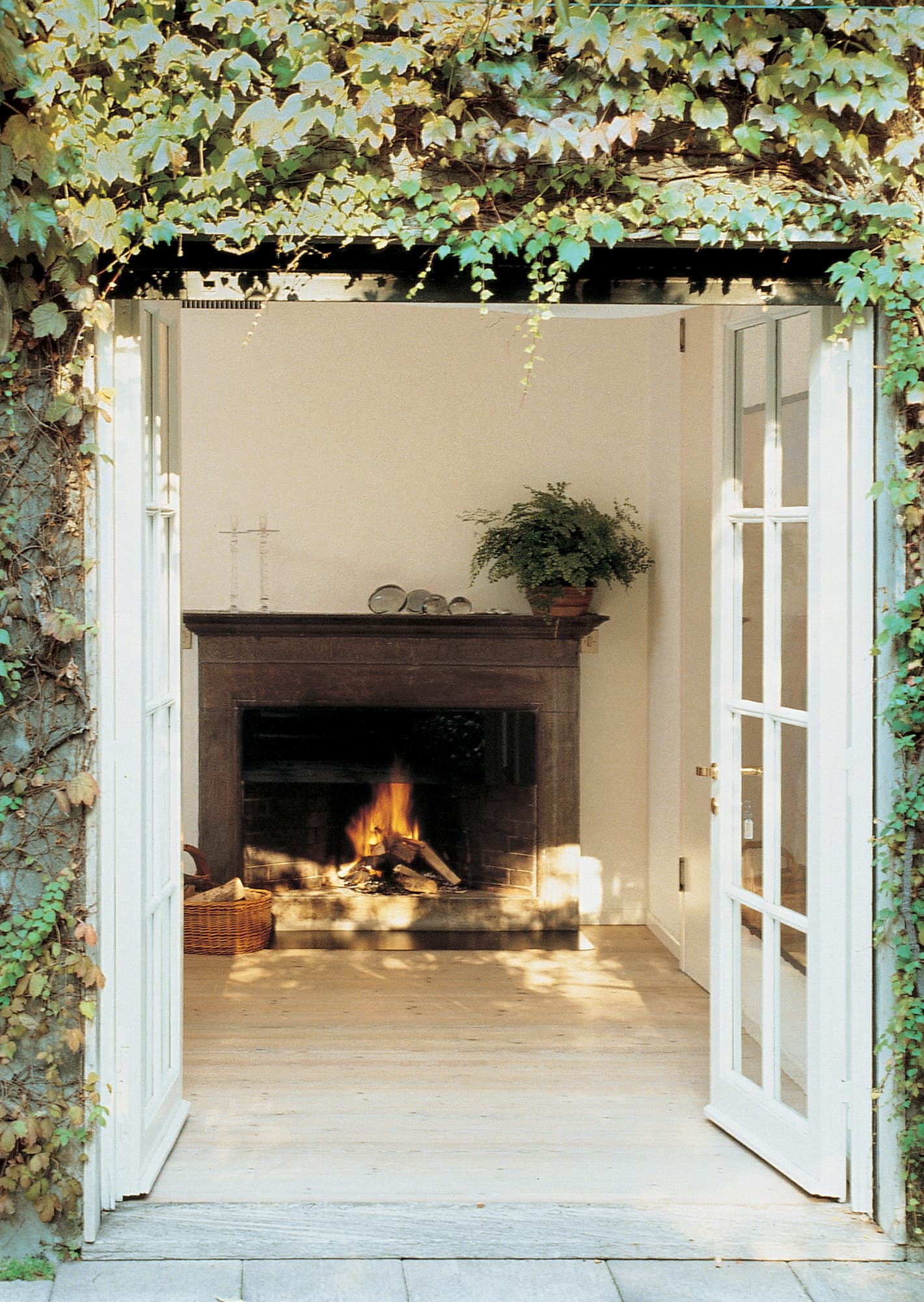
Built in the 1930s and adjoining an 18th-century palace, the cottage opened onto a vine-filled garden.
COURTESY OF DE PADOVAIn the 1980s and 1990s, de Padova nurtured a generation of Italian designers and architects, including Vico Magistretti, who helped reinvent office furniture, and Achille Castiglioni, whose Scrittarello desk and Matte stool are still in production under the de Padova name. After Maddalena ended her longtime association with Herman Miller in the 1980s, she introduced her own line, Edizioni de Padova, inspired by the chaste silhouettes of Shaker furniture and featuring collaborators like Renzo Piano and Patricia Urquiola. Later in life, Maddalena turned over the company (which was acquired by Boffi in 2015, a year before her death) to her children, Valeria and Luca. “She changed Italian sensibility forever,” says Gropp, whose memory of a dinner she gave for him and his staff at her home—10 of them showed up instead of the four she had been expecting, yet she didn’t blink an eyelash—is one he cherishes to this day. “She showed the way to combine a deeply modern style with a timeless graciousness,” he adds. “She was unique.”
THIS ARTICLE ORIGINALLY APPEARED IN VOLUME 10 OF FREDERIC MAGAZINE. CLICK HERE TO SUBSCRIBE!















